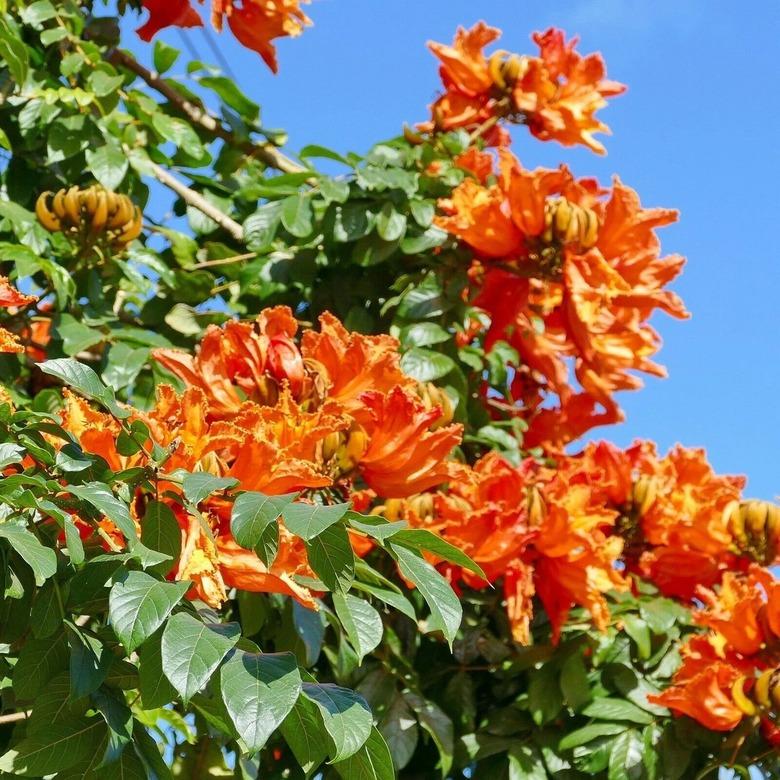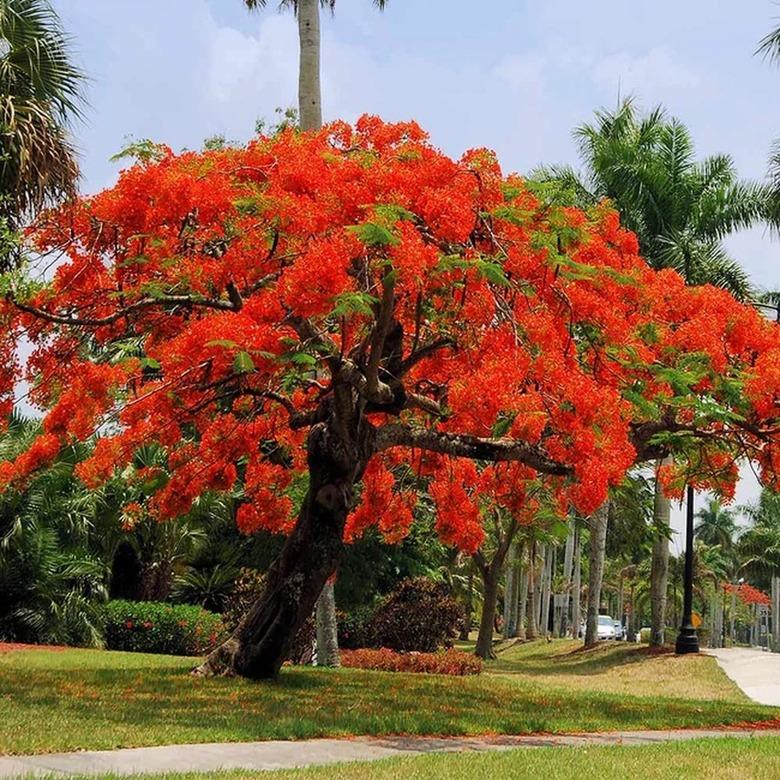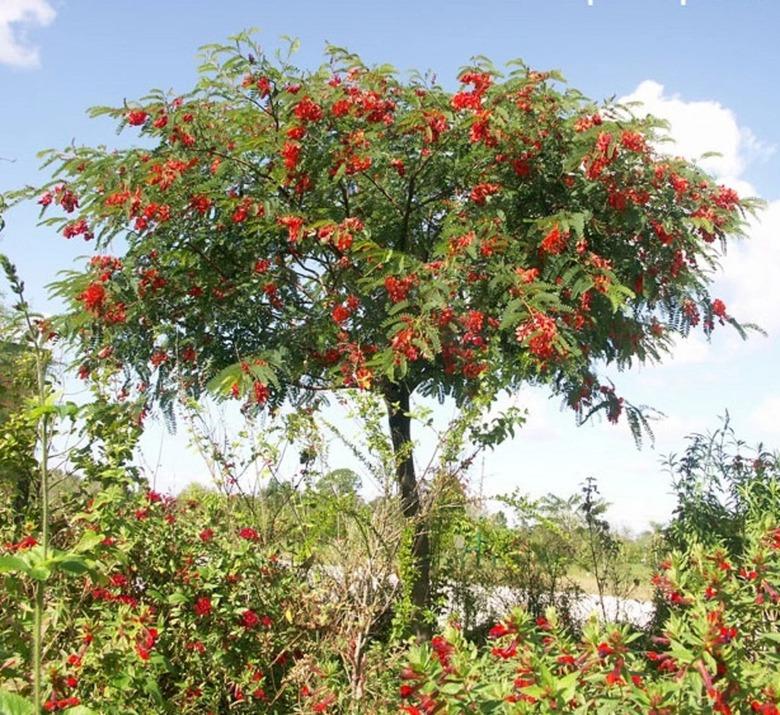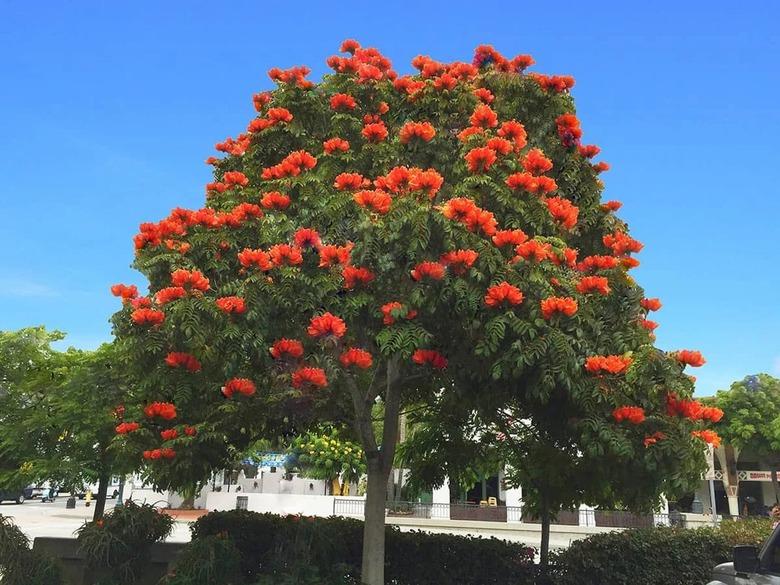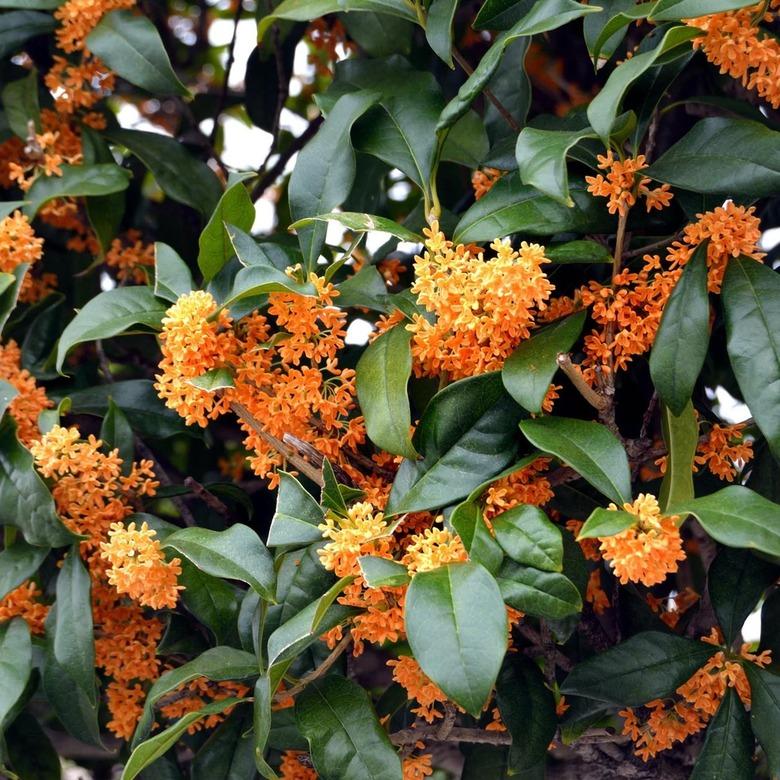4 Trees That Bloom Orange Flowers
Trees with orange flowers can make a bold splash in the landscape. There are quite a few choices in subtropical or tropical areas, but fewer that will tolerate colder climates. Although the more temperate trees may not grow as large as their tropical cousins, these smaller trees and shrubs can offer evergreen leaves, fast growth, fragrant blossoms, and a better fit for small yards.
1. Royal Poinciana
Royal poinciana or flamboyant tree (Delonix regia) is a large deciduous tree that can grow to 40 feet tall. Its broad, spreading crown is covered from June to July with yellow-orange blooms. The tree is hardy only to U.S. Department of Agriculture plant hardiness zones 10 to 12 and is easily damaged by freezing temperatures. Royal poinciana is pest-resistant, drought-tolerant, and adaptable to most soils. Large seed pods with hard-shelled seeds rattle when shaken. Plant a good distance from sidewalks and pavement, as the large, above-ground roots can lift cement.
2. Scarlet Wisteria
Scarlet wisteria or rattlebox (Sesbania punicea) is a fast-growing member of the legume family that is considered invasive in some areas. A deciduous small tree or large shrub, it can grow to 20 feet. It has alternate, compound leaves to 8 inches long with up to 25 pairs of elliptical leaflets. In spring and summer, it is covered with hanging clusters of bright-orange flowers. Seeds form in four-sided winged pods. The dry pods rattle in the wind, giving it the common name "rattlebox." Rattlebox trees can be invasive and grow in large thickets in the wild. Scarlet wisteria is hardy to USDA zone 9 through 11.
3. African Tulip Tree
African tulip tree (Spathodea campanulata) is native to tropical Africa. Reaching up to 60 feet in height with a crown up to 50 feet wide, the tree is not suited to small landscapes, except to provide deep shade. From winter to late spring, the tree produces a profusion of clustered orange and yellow flowers, held above the deep-green foliage. The long seed pods produce an abundance of seeds unattractive to birds. African tulip tree is not salt-tolerant. The tree is hardy in USDA zones 10 and 11 and is considered a non-native invasive.
4. Fragrant Orange Tea Olive
Tea olives are a favorite fragrant southern plant for growing underneath windows. Fragrant orange tea olive (Osmanthus fragrans f. aurantiacus) blooms in an abundance of bright-orange flowers in April. A fast grower, this tea olive tolerates full sun as well as partial shade. When not blooming, it is an attractive dense, dark-green evergreen tree up to 30 feet tall in the wild, but generally stays at 15 feet or less in cultivation. Growing in USDA zones 8 through 11, this variety is much hardier than most tea olives.
